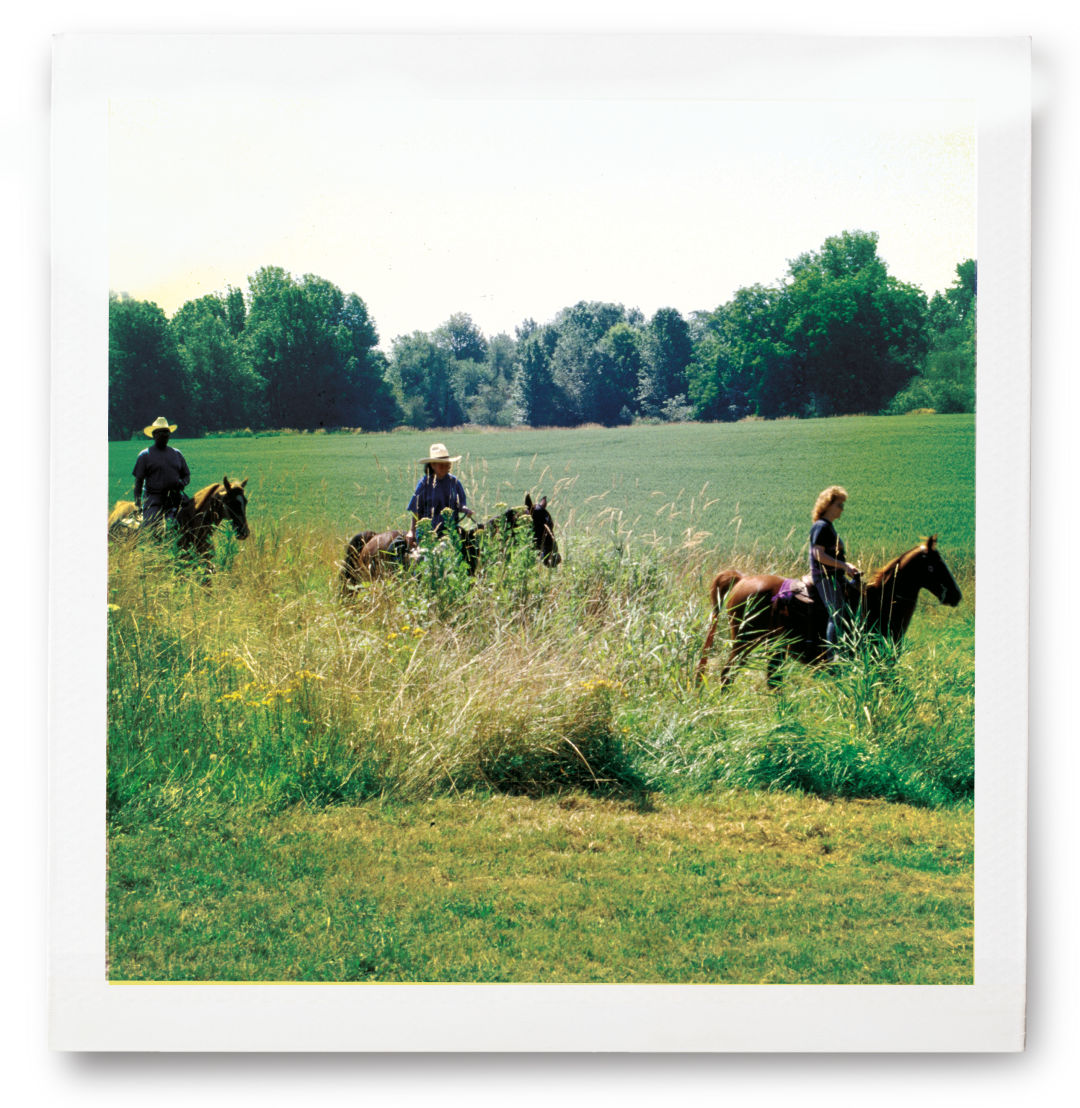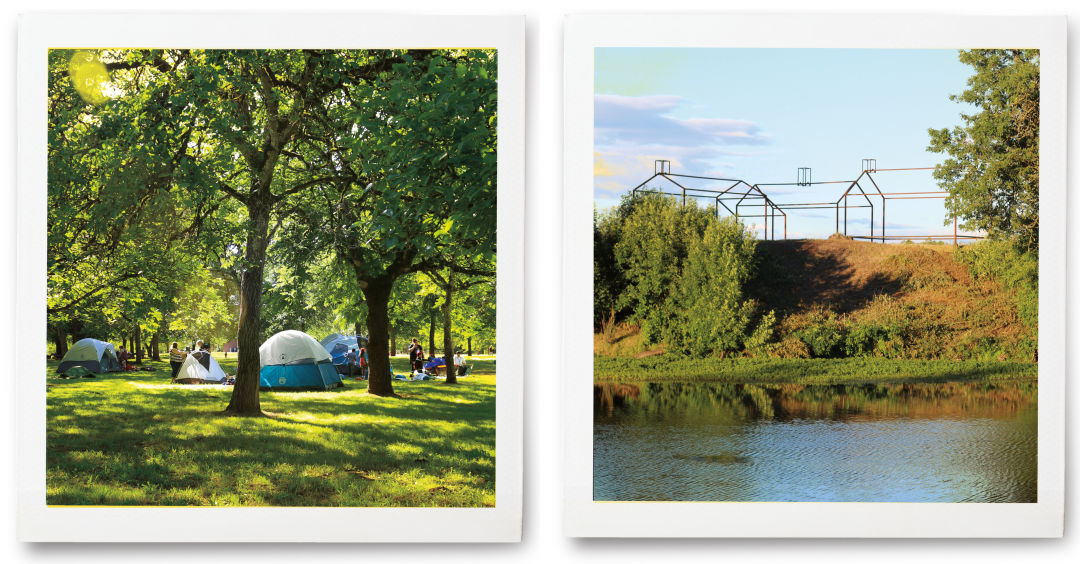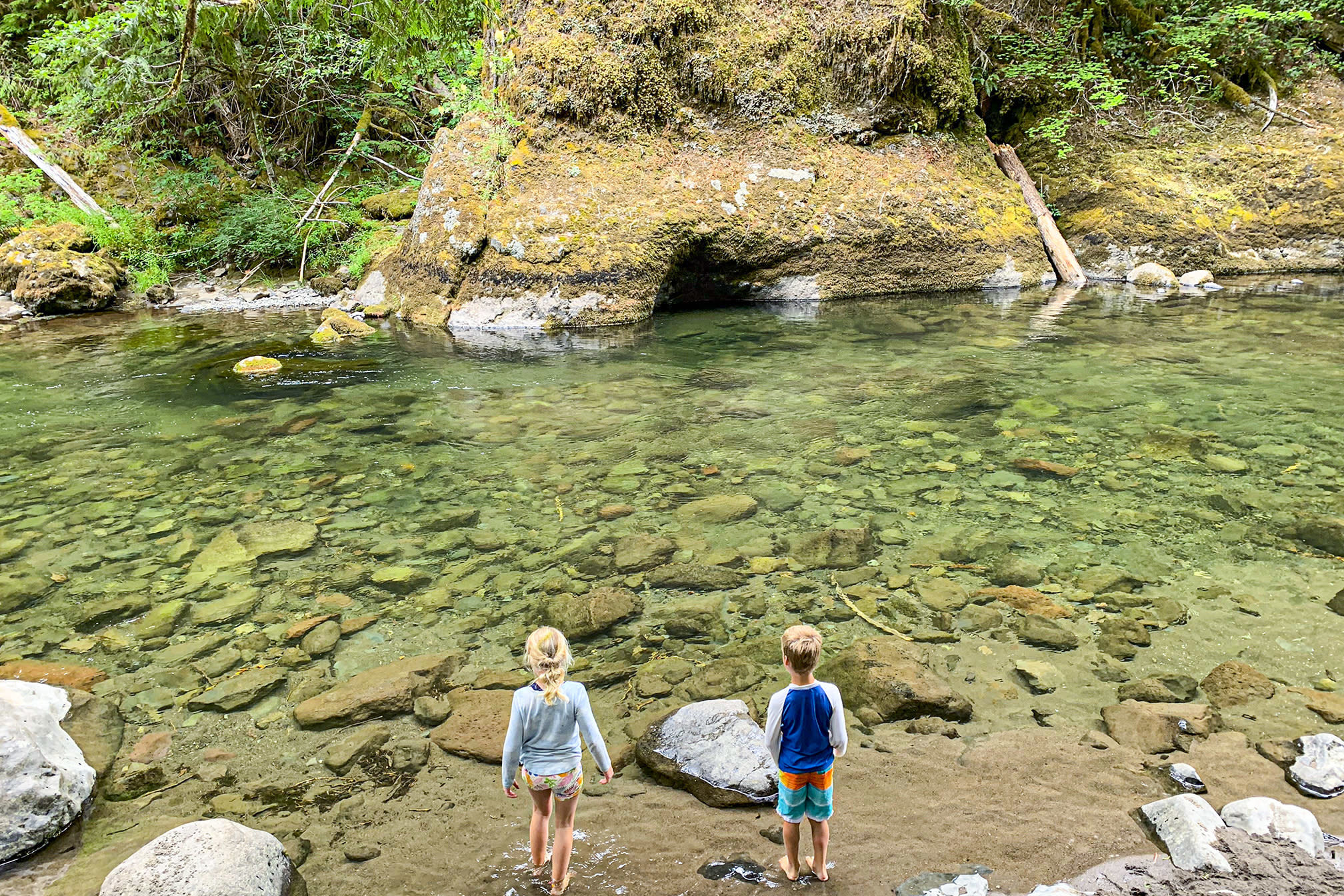At Willamette Mission State Park, History Meets Family-Friendly Hiking

Image: Courtesy Oregon State Parks
Drive up Wheatland Road on a summer day, and you’ll see exactly what drew so many 19th-century wagon trains west. Here, on the valley floor below the Eola-Amity Hills, the loamy Willamette Valley is still lush with cherries and blueberries, apples and hops. (So many hops.)
In the Rev. Jason Lee’s day, wheat crops mingled with the fruit and filberts. The French-Canadian built Oregon’s first mission school here in 1834, at a soggy river bend near present-day Gervais. Lee’s intended pupils were the children of the Kalapuya tribe, but the endeavor failed disastrously as the colonizers’ diseases ravaged the valley and evaporated trust. Lee had better luck in nearby Salem (he’s considered a city founder), but you can still visit his original pulpit at sprawling Willamette Mission State Park. Here, a ghost structure marks the site of Lee’s ill-fated settlement; it’s just a bit downriver from a black cottonwood tree said to be the nation’s largest: 158 feet tall, and approaching three centuries old.
From Wheatland Road, enter the park from a winding drive wedged between towering hop trellises and the Lafollette’s Berry Farm. Continue past wetlands set aside for native plant restoration to a web of trails snaking through the park’s 1,329 acres, including an equestrian multiuse trail (between Windsor Island Slough and Goose Lake) and paved bike paths perfect for carefree family cycling.

Image: Courtesy Oregon State Parks
For maximal edification by foot, hike down the mile-long, lake-hugging Mission Trail to meet the Bike Trail. Just 0.2 miles further, goggle at the cable-pulled Wheatland Ferry, which chugs across the Willamette every few minutes. (It’s free for pedestrians; bikes are a buck, vehicles are two.) For an easy two-mile loop, stroll back down the Bike Trail to the Filbert Grove day-use area—disc golf, anyone?—and follow the main road to the Mission Trail lot.
Post-Hike Watering Hole
Surrounded by so much farmland, you might forget: the hills to the west are prime wine country. From the park, catch the Wheatland Ferry and take Highway 221 (a.k.a. the Willamette Greenway) to Spring Valley Road. Roll past vineyards like Stangeland and Witness Tree before stopping for a $15 tasting flight at picture-perfect Cristom Vineyards.
Drive Time: 1 hour
Activity: Hiking, biking
Distance: 2-mile loop
Difficulty: Easy
Fee: $5 daily use




